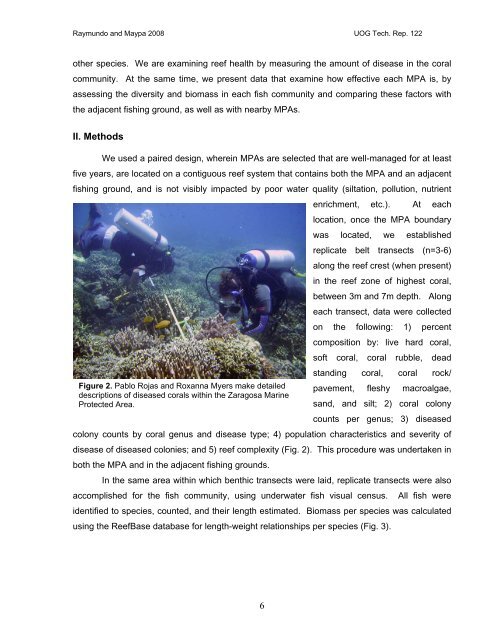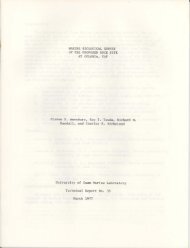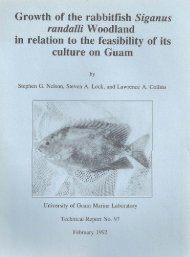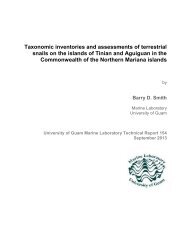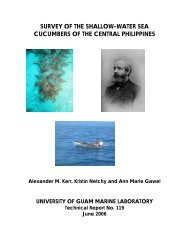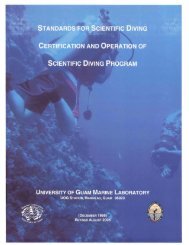Marine Protected Area Surveys Central Visayas, Philippines 2007
Marine Protected Area Surveys Central Visayas, Philippines 2007
Marine Protected Area Surveys Central Visayas, Philippines 2007
Create successful ePaper yourself
Turn your PDF publications into a flip-book with our unique Google optimized e-Paper software.
Raymundo and Maypa 2008 UOG Tech. Rep. 122<br />
other species. We are examining reef health by measuring the amount of disease in the coral<br />
community. At the same time, we present data that examine how effective each MPA is, by<br />
assessing the diversity and biomass in each fish community and comparing these factors with<br />
the adjacent fishing ground, as well as with nearby MPAs.<br />
II. Methods<br />
We used a paired design, wherein MPAs are selected that are well-managed for at least<br />
five years, are located on a contiguous reef system that contains both the MPA and an adjacent<br />
fishing ground, and is not visibly impacted by poor water quality (siltation, pollution, nutrient<br />
enrichment, etc.). At each<br />
location, once the MPA boundary<br />
was located, we established<br />
replicate belt transects (n=3-6)<br />
along the reef crest (when present)<br />
in the reef zone of highest coral,<br />
between 3m and 7m depth. Along<br />
each transect, data were collected<br />
on the following: 1) percent<br />
composition by: live hard coral,<br />
soft coral, coral rubble, dead<br />
standing coral, coral rock/<br />
Figure 2. Pablo Rojas and Roxanna Myers make detailed pavement, fleshy macroalgae,<br />
descriptions of diseased corals within the Zaragosa <strong>Marine</strong><br />
<strong>Protected</strong> <strong>Area</strong>.<br />
sand, and silt; 2) coral colony<br />
counts per genus; 3) diseased<br />
colony counts by coral genus and disease type; 4) population characteristics and severity of<br />
disease of diseased colonies; and 5) reef complexity (Fig. 2). This procedure was undertaken in<br />
both the MPA and in the adjacent fishing grounds.<br />
In the same area within which benthic transects were laid, replicate transects were also<br />
accomplished for the fish community, using underwater fish visual census. All fish were<br />
identified to species, counted, and their length estimated. Biomass per species was calculated<br />
using the ReefBase database for length-weight relationships per species (Fig. 3).<br />
6


